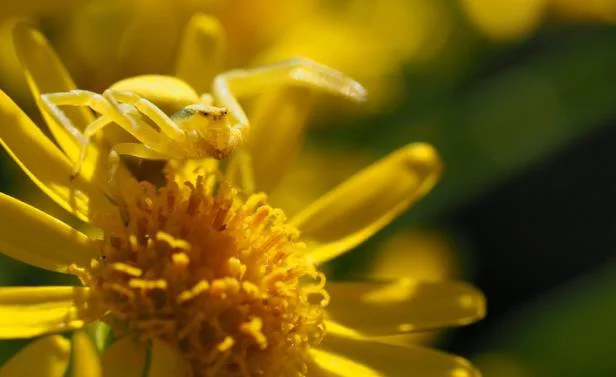The mechanisms that allow cells to degrade or even recycle pigments are poorly known, but necessary in contexts such as vision, where the pigmented cells of the retina are subject to a strong light beam that can damage them, in human skin when some pigmentary disorders lead to lack of pigmentation, or when certain species change color. This is the case for certain spider crabs, who can switch reversibly from white to yellow according to the flower on which they are hunting; this is a form of camouflage that could help them to capture their prey.
When studying these pigmentation and depigmentation mechanisms using a combination of state-of-the-art imaging techniques, scientists discovered that the pigmented organelles of spider crabs (the intracellular pigment “plants and storage centers”) are similar to the pigmented organelles of humans, snakes and insects, in particular because they all come from the same precursor and they accumulated naturally from metals.
These results allow us to classify the pigmented organelles of spider crabs in the larger family of lysosome-related organelles. Lysosomes are one of the main actors in the degradation of the cell content, indicating that the pigmented organelles have the same abilities and thus the ability to degrade their pigments. This hypothesis is confirmed by the three-dimensional description of pigmented organelles whose content is degraded in spiders changing color.
Beyond the case of spider crabs, these results appear to indicate that all pigmented organelles in animals may posses the same abilities to degrade, and thus that the mechanisms at play in the coloration change could also function in other contexts: spider crabs pave the way for new research to better understand the life cycle of pigments. This study model and these results are thus far the most precise on the pigment recycling phenomena assumed to exist in the human eye.
|
Référence : |
[1] The following were involved in this work: the IRBI (insect biology research institute) ( University of Tours, CNRS), in collaboration with the “Biomolecules and Plant Biotechnologies" laboratory (BBV) at the University of Tours, the “Cell Biology and Cancer’’ unit (Institut Curie/CNRS/Sorbonne University), the “Chemistry and Modelling for Biology of Cancer’’ unit (Institut Curie/CNRS/Inserm/Université Paris Saclay), the Cell and tissue imaging platform (PICT) at Institut Curie, the beamline Nanoscopium (SOLEIL Synchrotron facility) and the company CryoCapCell.
Scientific contact : Professeur Jérôme Casas, casas@univ-tours.fr
Press contact : Direction de la communication – Université de Tours : annesophie.laure@univ-tours.fr / Tél. 02 47 36 68 62
